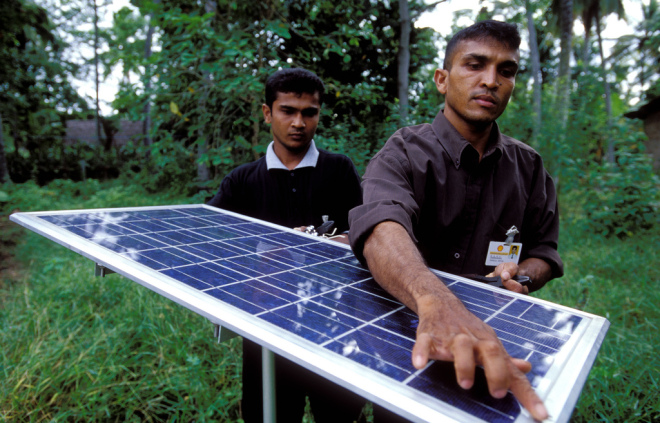
Low-income communities in America are disproportionately affected by climate change, yet seldom have the resources to help finance solutions such as solar power.
Often located near power plants, low income communities in the US and worldwide have higher rates of asthma and other debilitating health problems associated with air pollution.
Cities, home to the urban poor, will face greater temperatures as a result of the heat island effect, a result of human activities and infrastructure. This warming then threatens at-risk elderly and children who lack adequate resources to prepare and adapt to these rapid changes.
Renewable energy sources like solar power provide one of the most efficient ways to combat air-quality issues and climate change, but are usually out of reach for those with the most at stake.
Solar energy companies have began to take notice of the opportunity to help improve environmental quality, social equality, while also generating profit. Community solar is one of the tools being leveraged by these companies to make this happen, and the White House has taken notice.
What is community solar? Sometimes called shared renewables, community solar is essentially an arrangement that allows several energy customers to source their energy from a local solar installation.
These installments may be owned by a local utility, nonprofit, or other organization that may provide the community with the opportunity to invest in, or purchase this renewable energy at a fixed rate.
Similar to those who turn to community gardens when individual plots are unavailable, many people live in condos, apartment buildings, or other setups incompatible with installing a solar array on their own roofs. These households have found community solar to be a great way to source reliable, clean energy at affordable rates.
Unfortunately, government regulations and utility companies haven’t kept pace with developments like these, and often get in the way of these investment opportunities. However, the White House recently announced a host of new programs and services to help break down these barriers and provide access to community solar throughout the U.S.
One of the key measures in the plan is the launch of a National Community Solar Partnership, aiming to increase access to solar for the half of businesses with setups incompatible for solar systems.
The administration has also set a goal to install 300 megawatts (MW) of renewables in federally subsidized housing, helping to make direct access to clean energy a reality for nearly 50,000 American households.
Yet, the government isn’t the only one in a position of power.
As a Green American, there are a few ways that you can help make community solar power a reality.
Volunteering for an organization like GRID Alternatives is a great way to lend on-the ground support for the movement, as they often require little to no previous knowledge or experience — just a desire and motivation to help others.
Additionally, you can write a letter to your local representative and utility company, encouraging them to support the development of community solar projects in your area.
To find out more about community solar, check out the White House’s fact sheet on their new initiative here.





